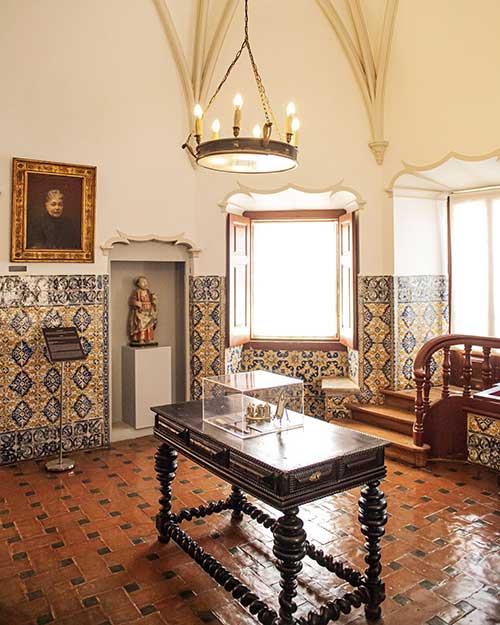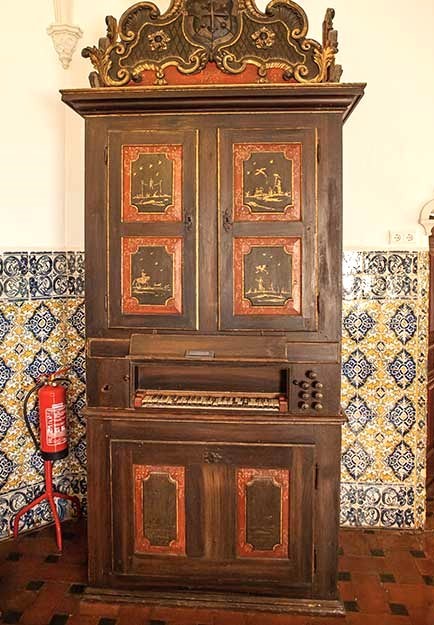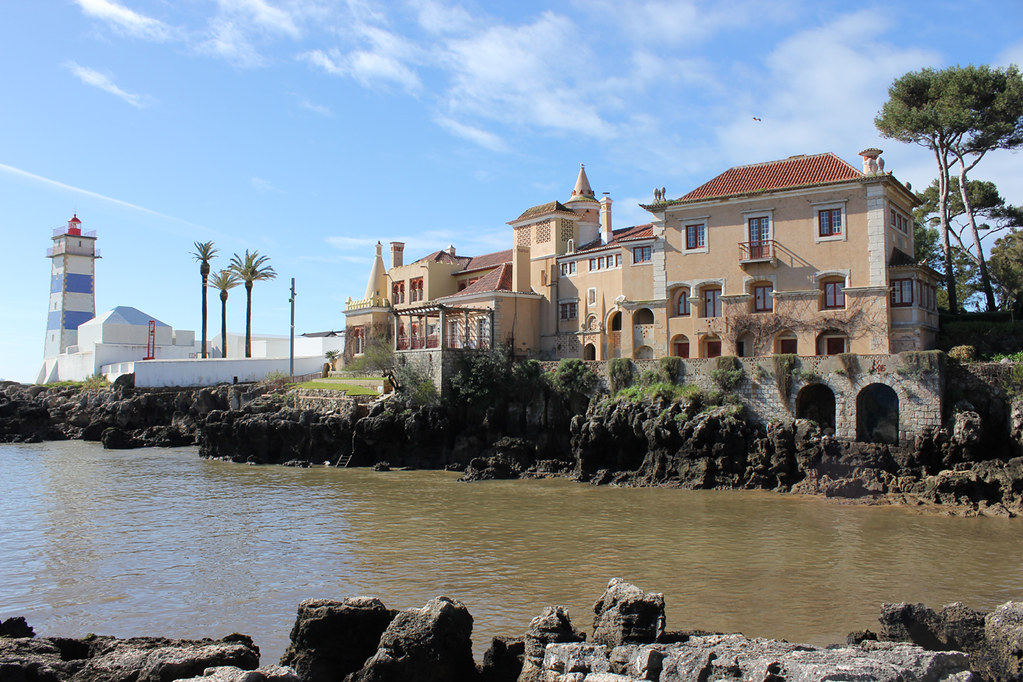On 19 June, the club took a trip to Cascais, which began with a guided tour of the Santa Maria House and the Santa Marta lighthouse.
The Santa Maria House was commissioned by Jorge O’Neill in 1902 from the architect Raúl Lino as a wedding present for his daughter Dona Teresa. Located in the Santa Marta cove, it was a private residence for 100 years and is one of the most emblematic works of architect Raúl Lino, who began his career in the municipality of Cascais, designing a series of houses for some friends.
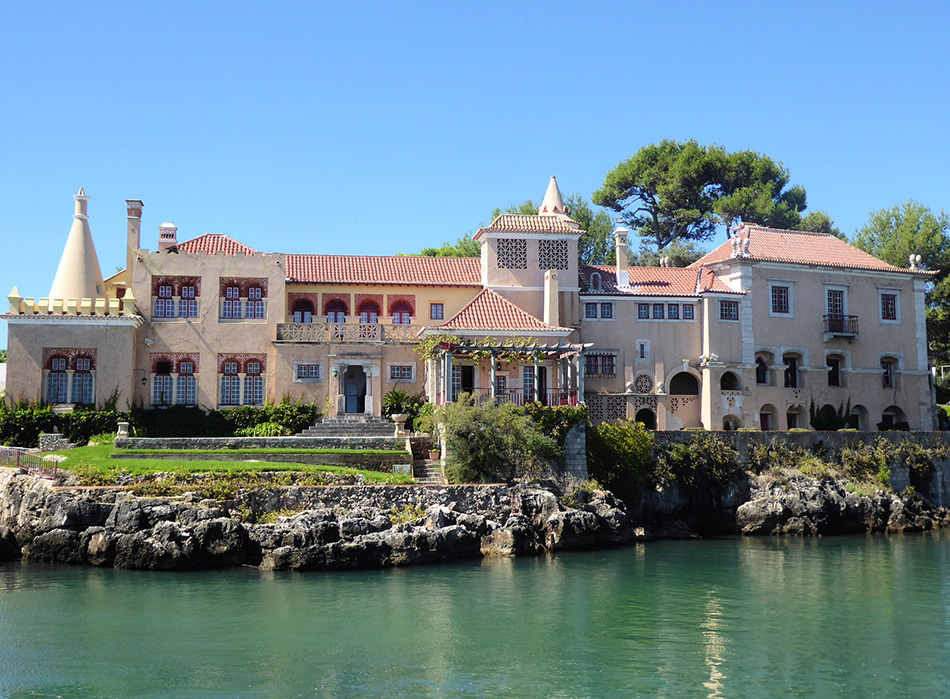
Inside, a series of elements stand out, including a large number of figurative and patterned tiles, both of country and religious iconography. The existence of such a rich and diverse collection of tiles is an indisputable asset, given that it is an artistic repertoire from the Portuguese Baroque period.
The Caravels Room has a ceiling painted with caravels and crosses of Christ.
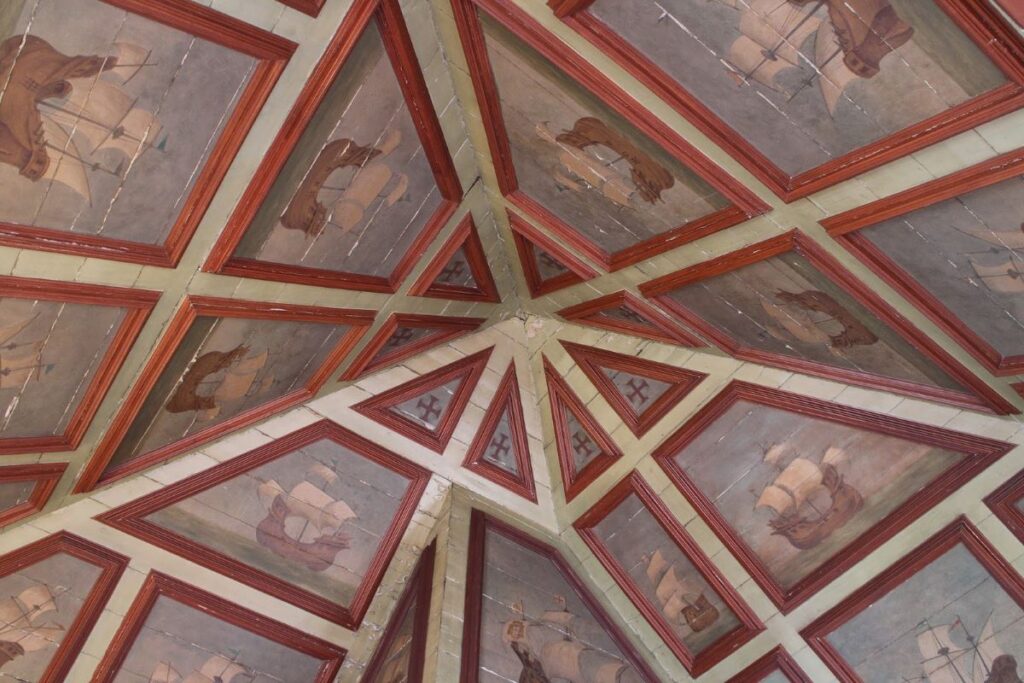
The Frescos Room includes an angular semi-circular cooker with a chimney decorated with a tree representing the work associated with the various months of the year.
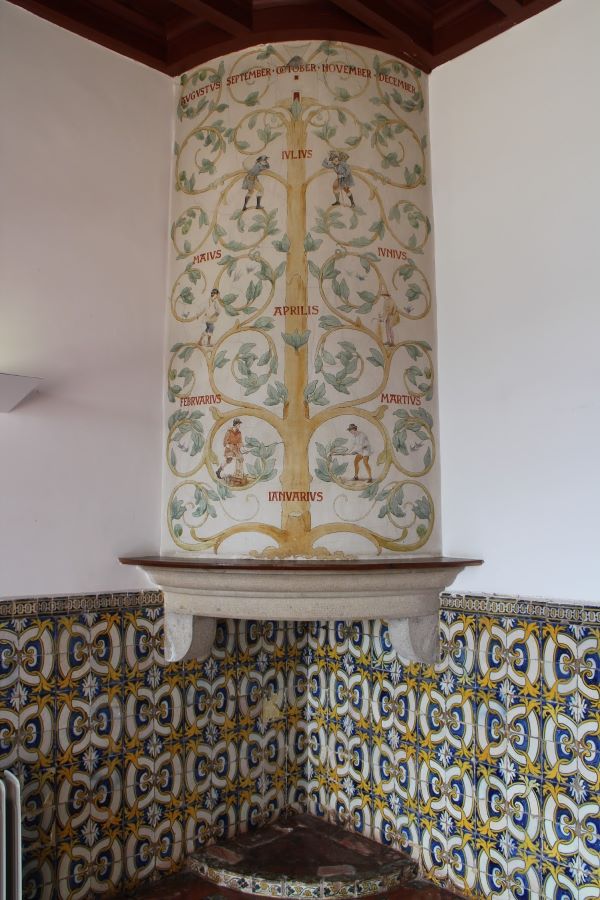
The Arches Room owes its name to the ogival arches that allude to the artistic period that the architect favoured: the medieval period.
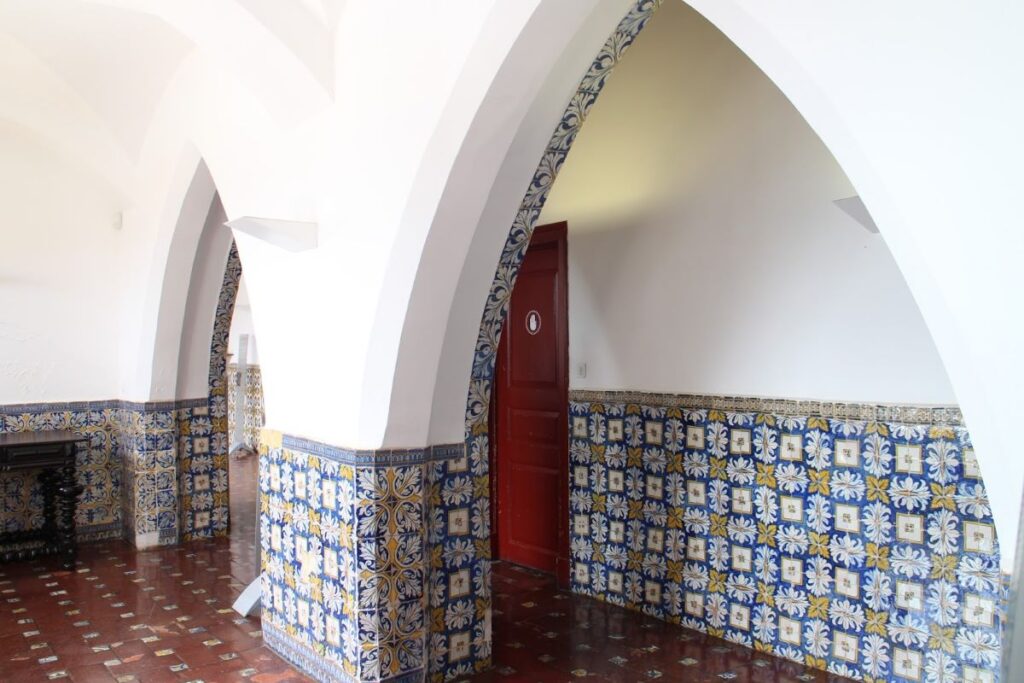
Great Hall – with artistic 17th century tiles and an oil-painted wooden ceiling by António de Oliveira Bernardes. The ceiling depicts figures of Atlanteans, angels and images of Constance and Mercy, two allegories inherent to the virtues of Faith and Charity.
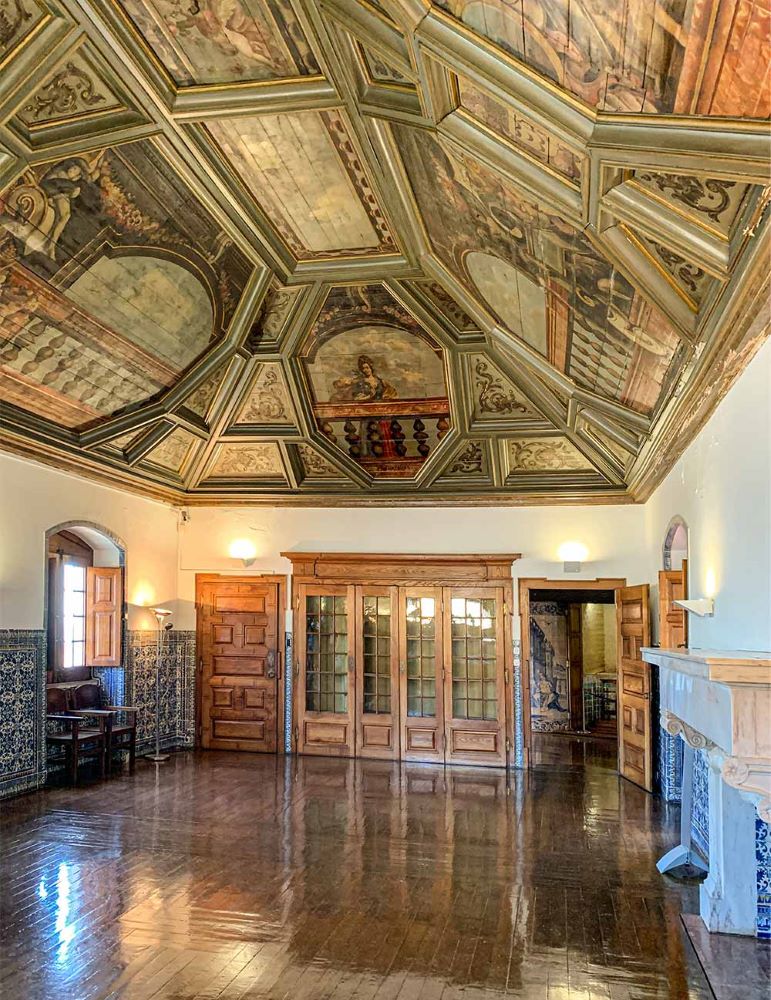
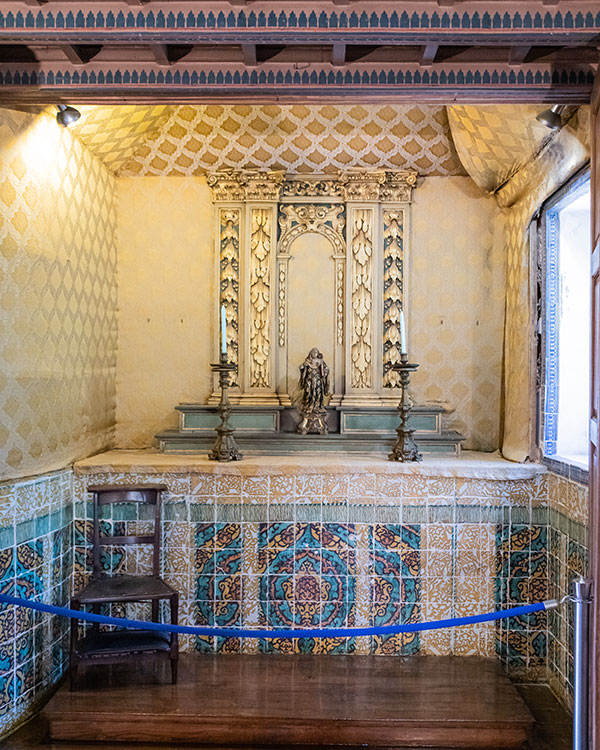
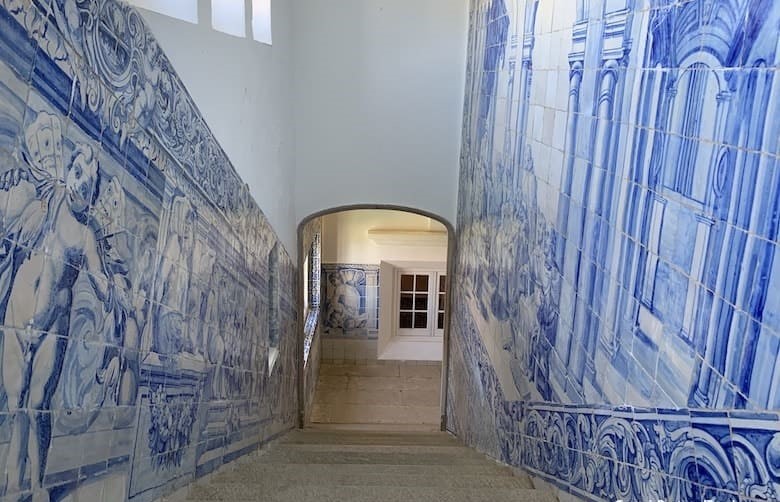
The Santa Marta Lighthouse is a Portuguese lighthouse located in the Santa Marta Fort. It is a quadrangular masonry tower, tiled in white with blue horizontal stripes and a red lantern. Inaugurated in 1868, it is 20 metres high.
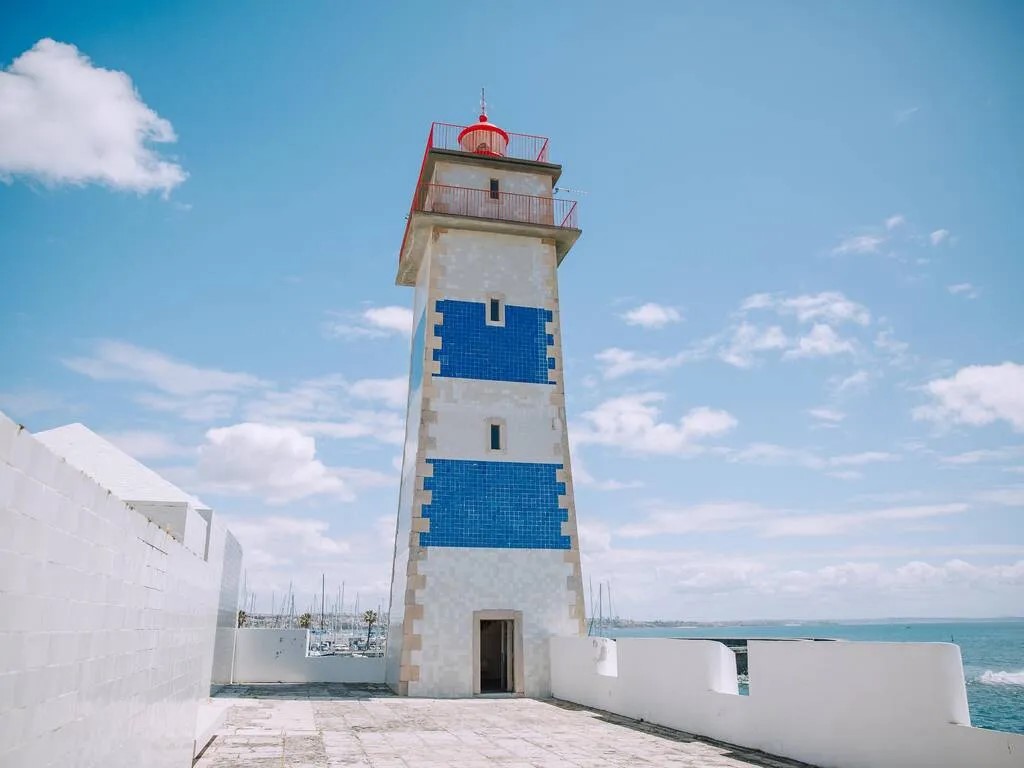
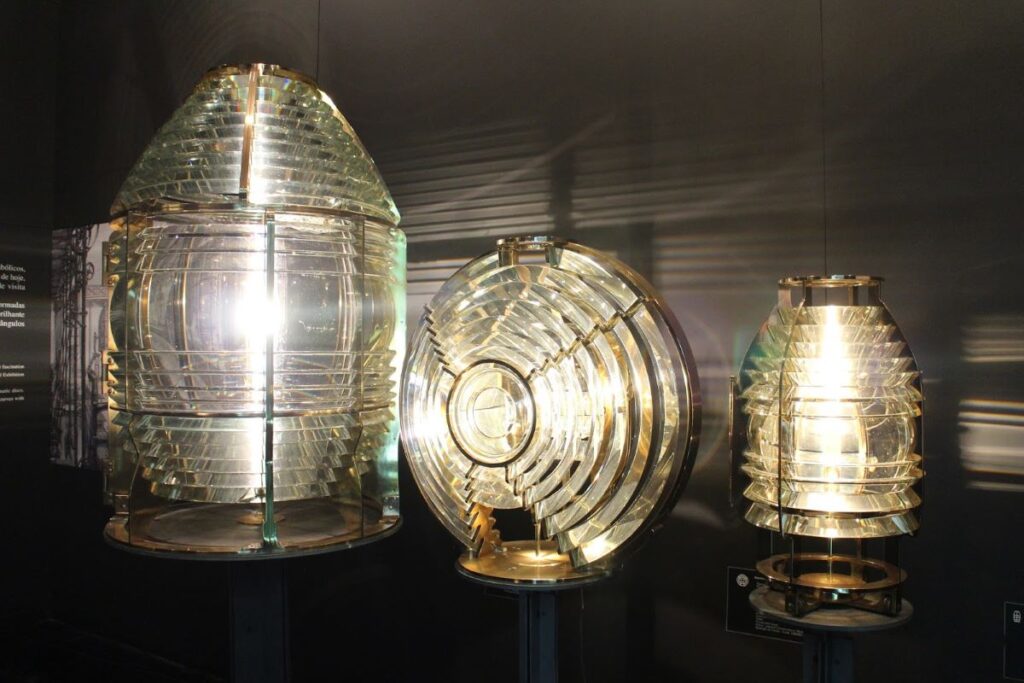
After lunch, we went to visit the Museum of the Sea and the Museum of the Counts of Castro Guimarães.
The Museu do Mar Rei D. Carlos is housed in the building of the former Sporting Club of Cascais, founded in 1879 by the then crown prince D. Carlos. Created by decision of the Cascais City Council following the loan of the premises in 1976, the Sea Museum was inaugurated on 7 June 1992. Later, in 1997, it was renamed the King Carlos Museum of the Sea, in recognition of a man who loved the sea and who, through his work there, helped to promote Cascais nationally and internationally.
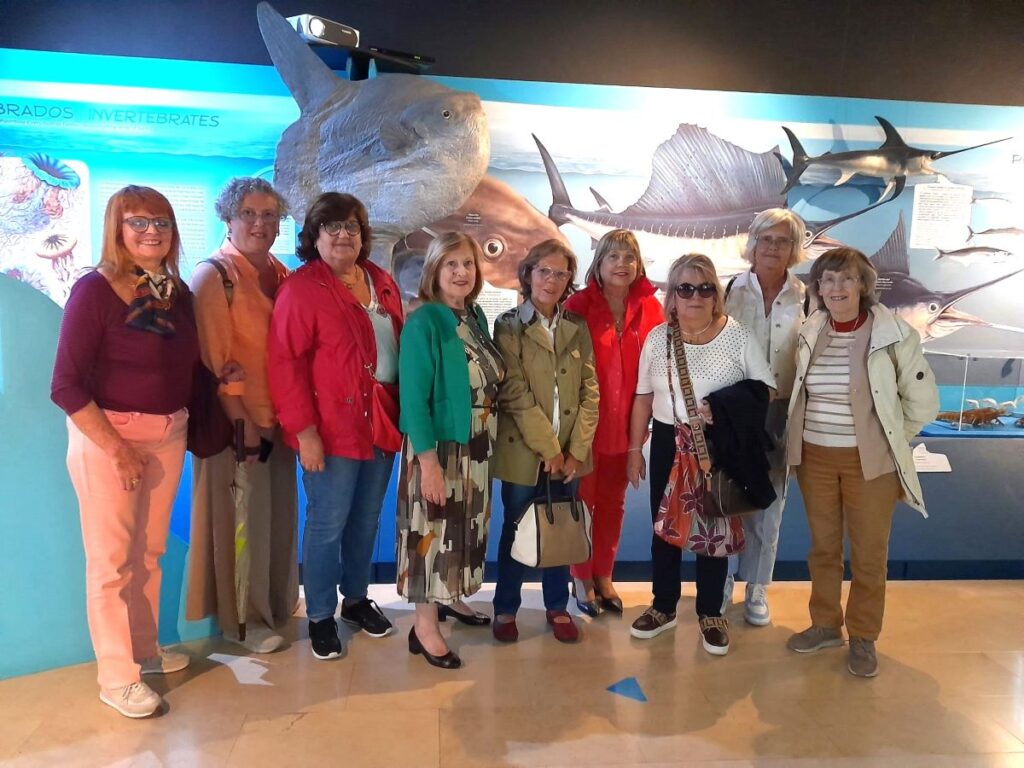


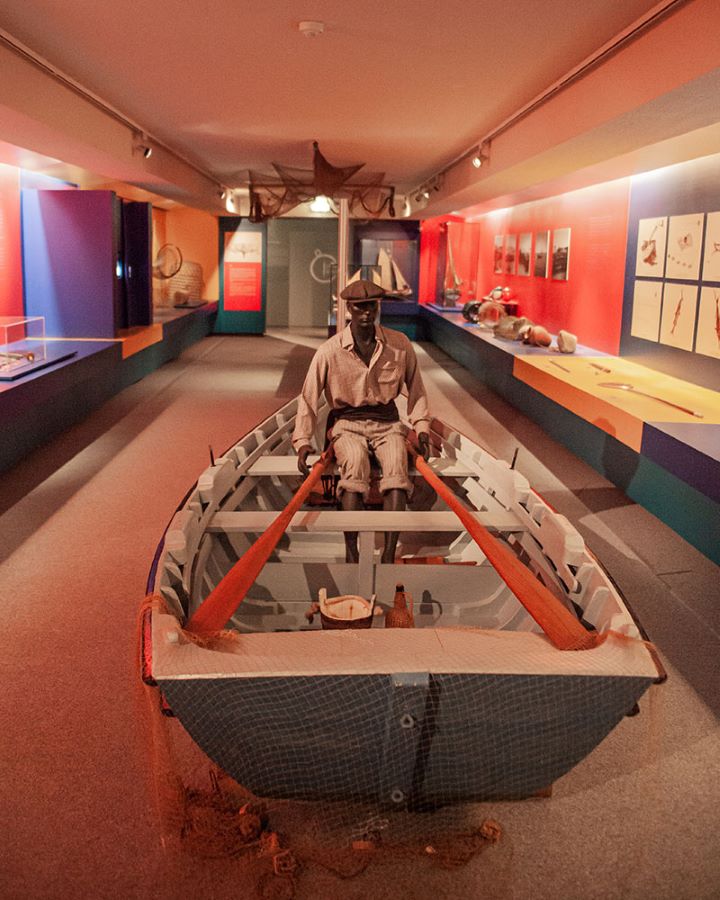
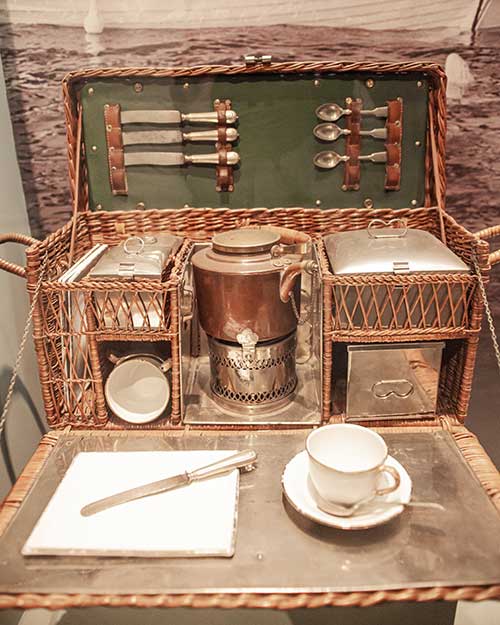
With its revivalist architecture, the Counts of Castro Guimarães Museum was built by Jorge O’Neill for Francisco Vilaça in 1890 and stands out for its medieval St Sebastian’s Tower.
Ten years later, Jorge O’Neill decided to sell the building to the Counts of Castro Guimarães due to financial difficulties, who lived in it most of the year. As they had no descendants, in 1924 the Count of Castro Guimarães left the palace and all its artistic and bibliographical contents in his will to the town of Cascais to be used as a house-museum and public library, in conjunction with the gardens as a public park. The Count died in 1927 and on 12 July 1931 the museum was inaugurated, the first in the municipality of Cascais.

The Counts of Castro Guimarães Museum’s collection includes important paintings; sculptures; Portuguese, foreign and Indo-Portuguese furniture; national porcelain and jewellery and French tableware from China, India and Brazil, as well as Europe, between the 16th and 19th centuries.
Another important part of the museum’s collection is the Chronicle of King Afonso Henriques (1505) by Duarte Galvão, whose Prologue page includes works by the miniaturist António d’Ollanda.

The Clover Room – the name of this room comes from the painted clovers that decorate the ceiling of this room, representing the symbol of Ireland, the country of origin of the ancestors of Jorge O’Neil, the first owner of the Torre de São Sebastião. There is also a wide range of Portuguese and French neoclassical furniture from the late 18th and early 19th centuries, with pieces partially or completely covered in gilding.
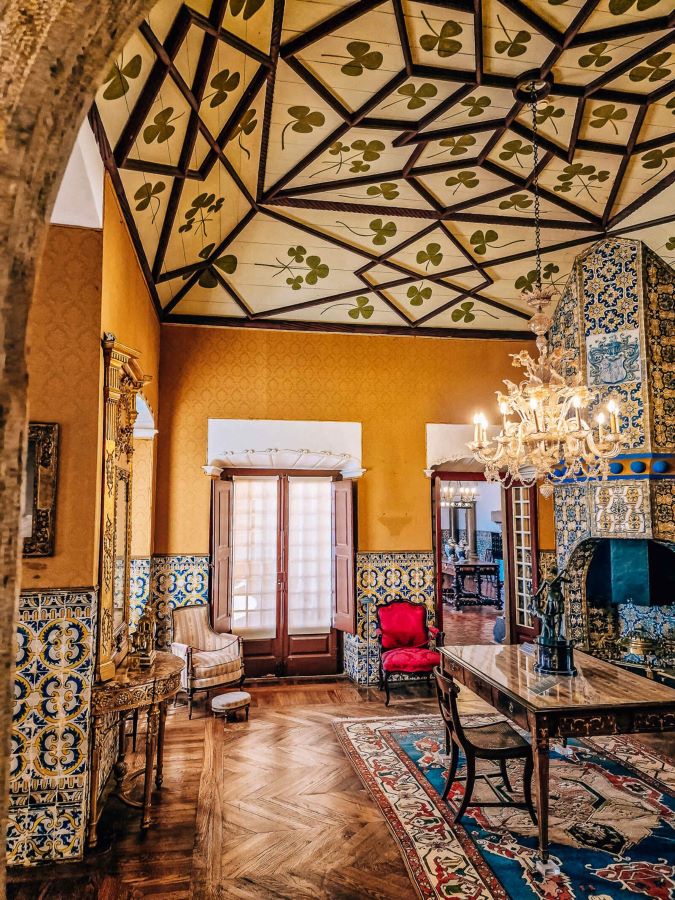
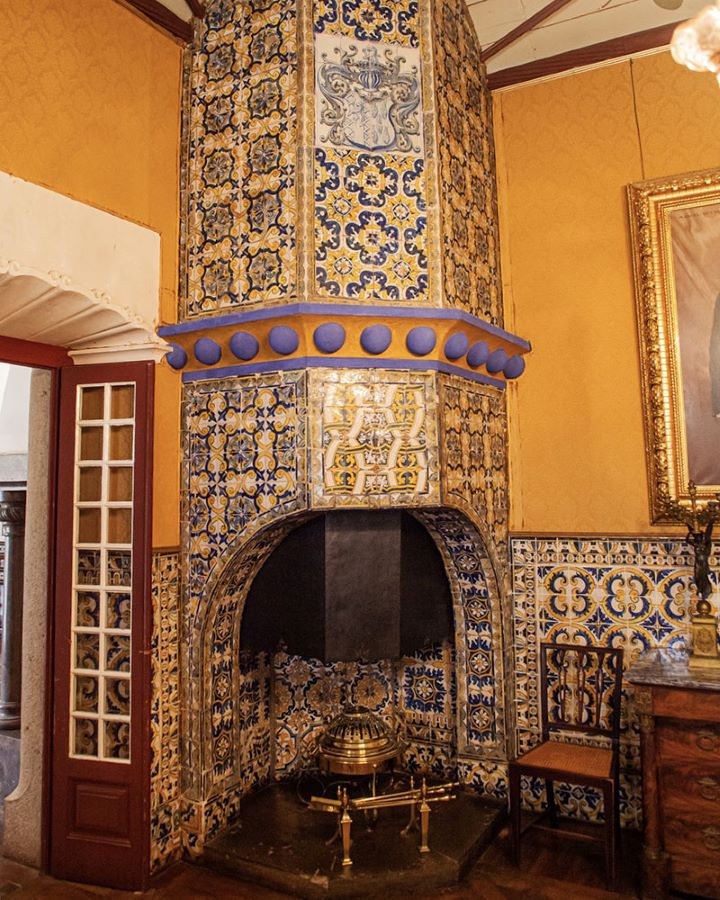
The Music Room – a room decorated with 17th-century tiles in different patterns, with walls lined in red damask. The ceiling is profusely decorated with the coats of arms of Count Manuel de Castro Guimarães’ ancestors. In this room, an authentic portrait gallery, you can see works by various Portuguese and foreign authors from the 17th and 18th centuries and a set of French-inspired Portuguese chairs and canapes.
Also noteworthy is an organ with a pneumatic tubular system, with a total of 1170 pipes, made in Braga in 1912 by Augusto Joaquim Claro and commissioned by the Count of Castro Guimarães especially for this space.
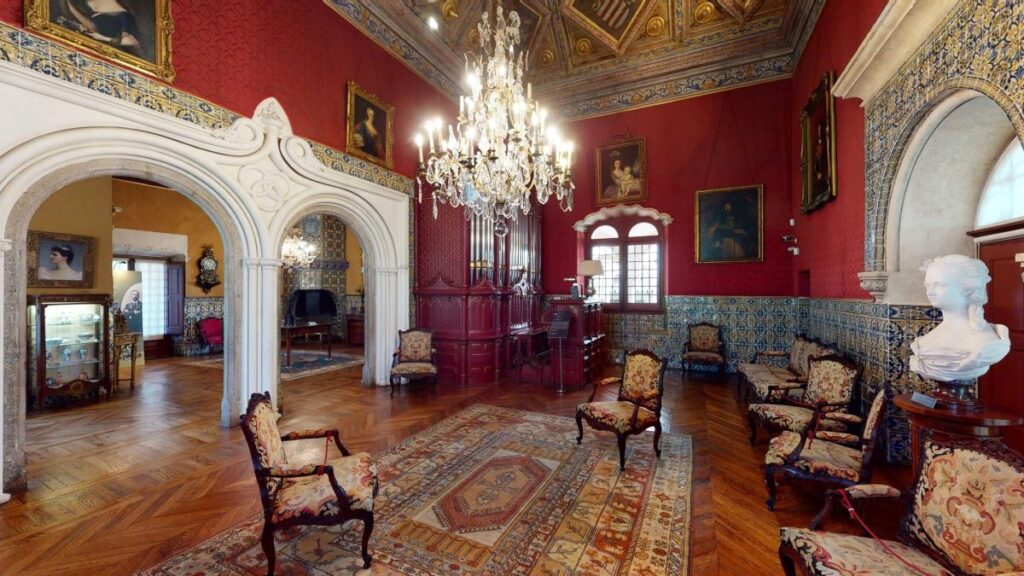

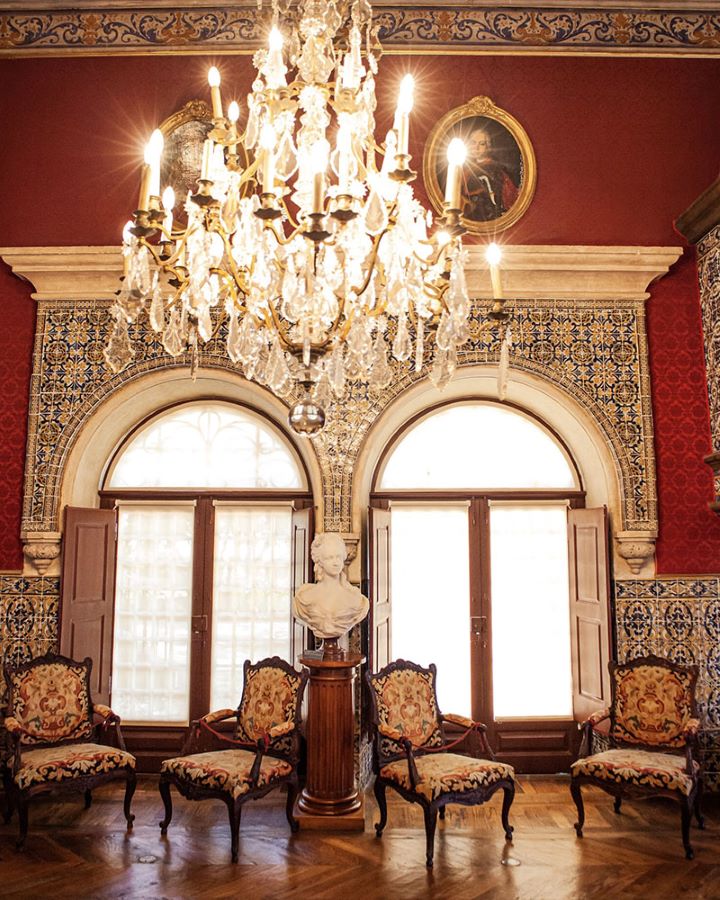
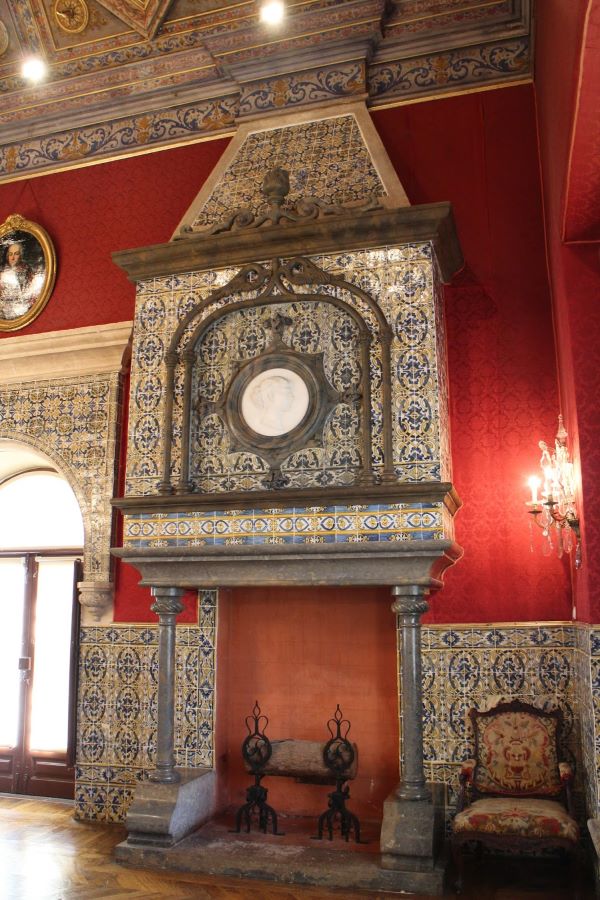
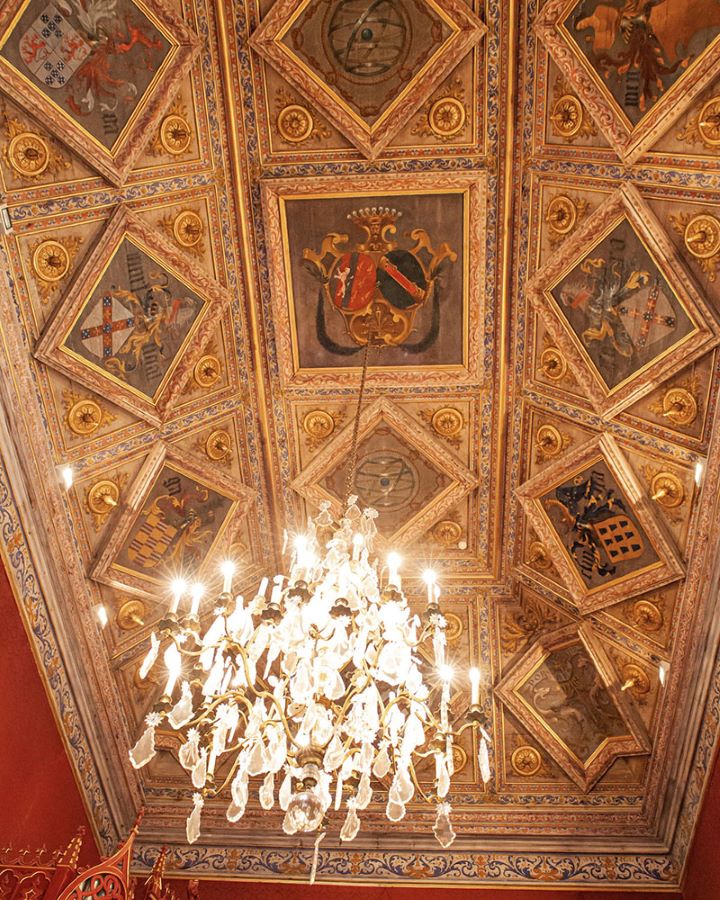
The neo-Gothic room – so named because it has a ribbed vaulted ceiling, forming neo-Gothic arches with Manueline and medieval imagery elements, this room also stands out for its large windows opening onto a wide balcony outside, decorated with polychromatic tile panels. In addition to two Chinese porcelain vases bearing the Sobral coat of arms, there are several pieces of furniture produced in Portugal in the 17th century, made from dark wood, mainly rosewood, with gilded brass applications shining through.
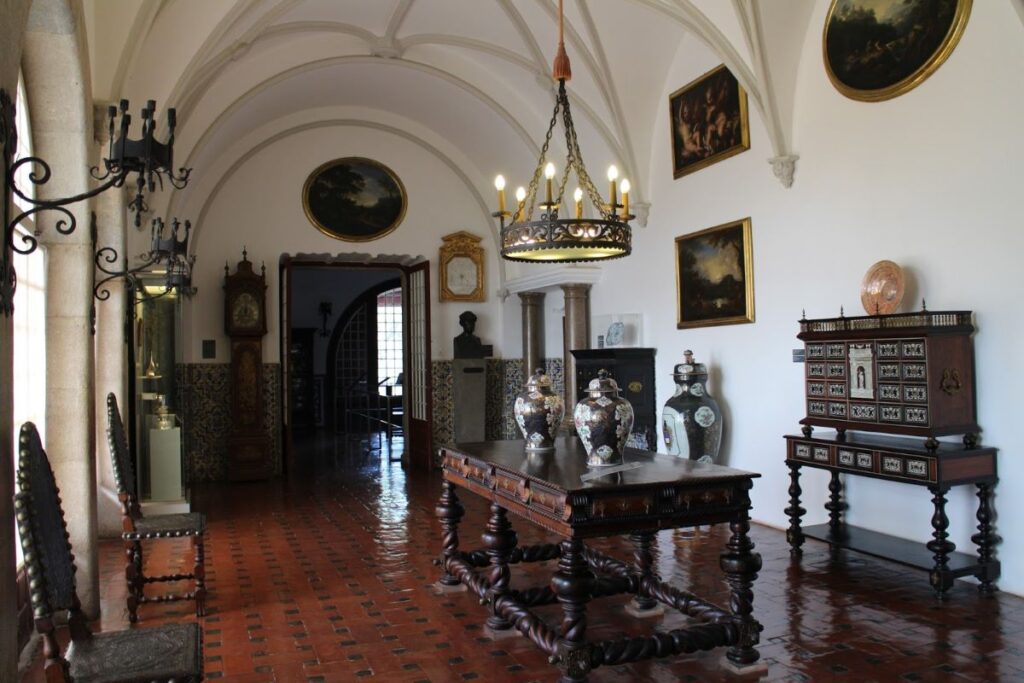
Dining Room – in this room, which was originally a large terrace, there is a fountain covered in Arabesque tiles, and a huge window has been preserved to access the balcony with a Minho porch. Nowadays, as well as displaying armoured China porcelain and silver tableware, the room has a side table integrated into the French service, on which one of the Museum’s two silver tableware sets is displayed, consisting of a large number of different individual and service plates, a cutlery set, candlesticks, holders, a crystal glass service and a Chinese porcelain tureen.

The Dr José de Figueiredo Room – the former dressing room of the counts, now dedicated in honour of this great historian, museologist and art critic. Also noteworthy for its quality and rarity is a lacquered tea box made in China in the 18th century with mother-of-pearl inlays.


Library – made up of the bibliographical collection bequeathed by the Count of Castro Guimarães, this collection essentially includes works on universal history, the history of Portugal, music, seamanship and novels. The most emblematic and valuable work in the Museum’s collection is the illuminated manuscript of the Chronicle of King Afonso Henriques, by Duarte Galvão, dating from 1505, in which the first known representation of the city of Lisbon, by António d’Ollanda, is noteworthy.

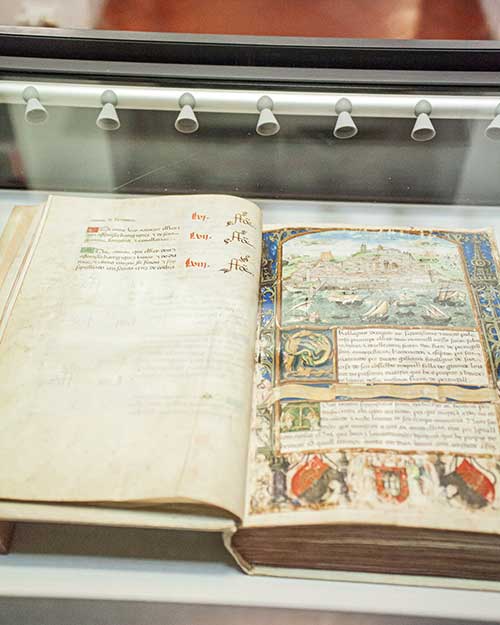
Tower and Armoury Room – a space dedicated to presenting the museum’s armoury collection, with a ceiling richly decorated with the coats of arms of Jorge O’Neill’s ancestors.
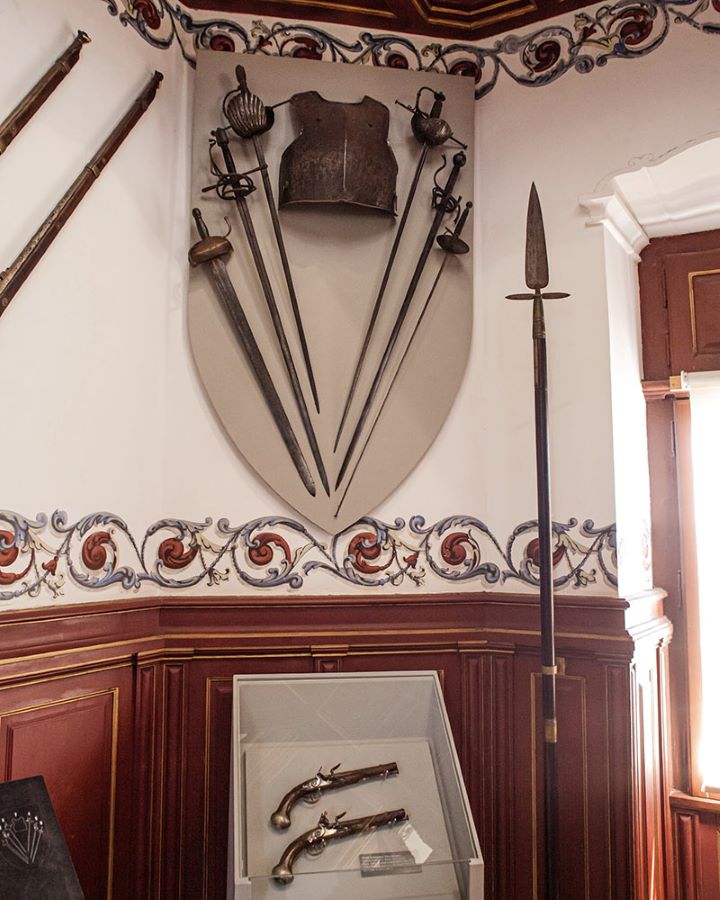
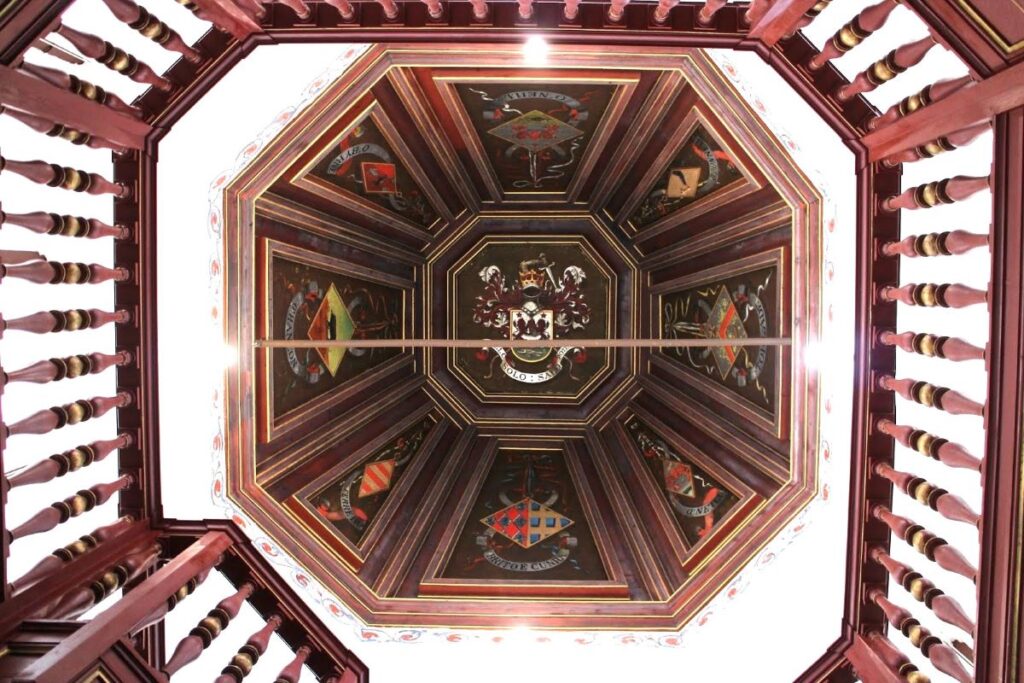
Study – The small study has a ceiling with neo-Gothic ogival arches and tiled walls. The highlight of the room is the portable organ of great importance due to its rarity, a piece of furniture dated with the inscription ” Era of 1753″ and the insignia of the Dominican order. This organ is also one of the examples in which the characteristics of Portuguese acharoada painting, an attempt to imitate oriental lacquer, are best expressed.
